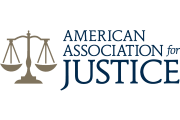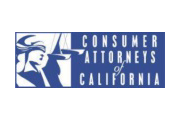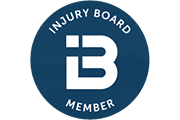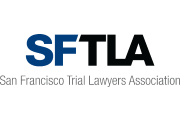Fresh coats of paint are hitting the pavement in San Francisco, creating new zones of supposed safety for bicyclists. But that long-awaited change comes at a time when local cyclists are as fearful as ever of automobiles, particularly following a horrifying incident in which a motorist intentionally ran down four cyclists.
On Aug. 6, San Francisco Superior Court Judge Peter Busch announced that a four-year injunction against projects in the city’s Bicycle Plan would be fully lifted, freeing an ambitious package of bike-related infrastructure from legal limbo and effectively kick-starting 35 new bike lanes throughout the city, bringing San Francisco’s bike network up to 79 miles.
“A world-class city is a city that tries to democratize its streets,” Mayor Gavin Newsom noted at an Aug. 9 press conference held to celebrate the newly liberated Bike Plan. “This is not the old days when it was about bikes versus cars.”
New lanes will soon materialize on Townsend, North Point, and 17th streets, as well as Portola Drive and Ocean Ave., with many more projects soon to come.
“This is a great day for bicycling,” San Francisco Bicycle Coalition Acting Executive Director Renee Rivera said at the event. “We are beginning a new era. The city is going to become the most bike-friendly city in our country.”
Bicycle ridership in San Francisco has increased 53 percent since 2006, according to city traffic surveys, and the 11,000-member SFBC has become the city’s largest grassroots advocacy organization. SFBC officials say the trend is likely to continue, citing survey results showing that more than a third of city residents say they would occasionally swap their steering wheel for a set of handlebars if streets were more inviting to cyclists.
Does all of this mean it will get easier for cyclists and motorists to “share the road,” to borrow an oft-repeated mantra of the bike community? While San Francisco is hailed by some as way ahead of the curve on bikeability, others argue that there’s a steep uphill climb ahead before a real sense of equilibrium can be realized. In a dense urban environment like San Francisco, where even the paved streets are highly sought-after real estate, tensions routinely flare between drivers and bicyclists as they wheel through the same arteries.
All modes of transportation are not created equal. It’s inherently riskier to ride bikes than drive cars that are built to keep their occupants safe in crashes. Yet bikes are a key component in the city’s and state’s long-range goals of reducing carbon emissions, limiting traffic congestion, and reducing dependency on oil.
Still, it’s all too common for motorists to become irate at cyclists, and vice-versa, giving rise to aggressive exchanges, unfriendly gestures, bitter resentments, and worse. Sometimes, much worse.
Rolando Casajeros, known to his friends and coworkers as “Allan,” shuffled into a law office conference room and gingerly lowered himself into a seat before a set of news station microphones on June 24.
A scar zigzagged across the top of his shaved head, and another crossed vertically down his forehead – marks from surgery he’d undergone to alleviate bleeding in his brain a couple weeks earlier. His front teeth were missing. His lips were swollen and purple. He’d suffered 12 facial fractures, plus mouth and jaw injuries, followed by 19 hours of intensive surgery.
Casajeros was the first and most seriously injured victim of a hit-and-run rampage that occurred June 2 when a motorist behind the wheel of a blue Nissan Rogue SUV struck four cyclists in San Francisco’s Mission and Potrero Hill neighborhoods, allegedly on purpose. At a press conference in the downtown San Francisco law office of his attorney Claude Wyle, Casajeros recounted what happened.
Speaking in a soft voice, he explained that he’d gone out on his bike to buy milk from Safeway, and had nearly made it back to his apartment in the Mission. The next thing he remembers is blacking out. “Bam, that’s it,” he said. “I just remember I flew in the air. That’s it.”
He woke up two nights later at San Francisco General Hospital. He said he nearly fainted when doctors conveyed the extent of the damage. Casajeros’ medical bills totaled around $300,000, according to his close friend and one of his temporary caretakers, Kellie Arechiga. He was accepted into the city’s Healthy San Francisco program after the incident, but previously did not have medical insurance. Employed as a server at the Old Clam House, he’s been unable to complete a shift since being struck by the SUV.
Like many working-class San Franciscans, he’s a renter who lives paycheck to paycheck. A benefit at the Old Clam House drew support from friends, coworkers, and the cycling community, but it’s too early to say how his life will be affected in the long run.
Several days after the four cyclists were hit, 39-year-old David Mark Clark of Albany – the owner of the SUV – approached police with a story that he had been carjacked that night, but he was immediately arrested and charged in connection with the hit-and-runs. The San Francisco Police Department refused to release the police record from the incident, saying it was part of an ongoing investigation.
Clark has been held without bail in the psych ward of San Francisco County Jail since his arrest, according to Brendan Conroy, his criminal defense attorney. He pleaded not guilty to four counts of attempted murder, four counts of assault with a deadly weapon (a car), and three counts of battery causing serious bodily injury. He appeared in court in late July and is scheduled to go back Sept. 24. He has no prior criminal record.
The incident sent shock waves throughout the cyclist community, leaving people wondering what kind of a person could be capable of such a thing. People close to Clark told the Guardian they were shocked to learn of the charges against him.
Originally from Westchester County, N.Y., Clark worked as a tennis instructor, giving lessons in Berkeley. He was also known to be a practitioner of reiki – a kind of energy healing – and was deeply interested in crystal healing techniques and meditation.
If his Facebook contacts are any indication, Clark surrounded himself with massage therapists, energy healers, life coaches, and musicians. David Schlussel, a yoga instructor who underwent a reiki session with Clark, said he was “flabbergasted” when he heard of the charges. “He’s so into peace and kindness, and he’s a cyclist himself,” he said, noting that if Clark is found guilty of running down the cyclists, it would reflect “a psychotic break.”
Another source – who said he’d known Clark since age 14 – described him as “the nicest guy,” saying, “he was all love and peace and harmony.” The youngest of eight children, Clark grew up in a close-knit Christian family and moved to the Bay Area a little more than a year ago, drawn in part by a rich network of new age and spiritual organizations. He described Clark as “a student of life and spirituality, and definitely zealous about it.”
He said he hadn’t spoken to Clark in the weeks prior to the incident, but word in his social circles was that Clark may have been acting strangely in the days before the rampage, possibly not sleeping and meditating more than usual. “This was some freak situation that I don’t even know the details of,” he said. Whatever happened, Clark’s friend was insistent that “this has nothing to do with any bicyclist hate. That’s just a crock.”
At this point, no one really knows what made the SUV driver ram into Casajeros and the others. Yet during the press conference, Wyle sought to link the tragic rampage to a wider trend of drivers’ aggressive behavior toward people on bikes.
“It’s like a war zone out there,” he said. Facing the news cameras, he held up a bumper sticker that read, “Share the road,” and said, “this is my message. Just give cyclists some space.”
While the terrifying hit-and-runs may have had more to do with Clark’s mental state than with the anger that many motorists feel toward bicyclists, Wyle said he can’t help but lump them together.
Every day, Wyle – who specializes in bicyclist incidents – says he receives a call from a cyclist who’s had a run-in with an automobile. He says most accidents could be chalked up to simple carelessness on the part of motorists.
However, he notes that a small but growing number of altercations stem from reckless indifference or even overt vengeance, and he’s represented numerous cyclists who were injured after mean-spirited games went awry.
“We’ve had cases where people have thrown items out of the car, including bottles, at bicyclists. They probably don’t think ‘I really want to hurt this person,’ but they don’t think it through clearly enough when they do play games with bicyclists,” Wyle said.
He once had a client who tumbled into a ditch and broke her arm after a guy leaned out of a car window and smacked her on the butt. He’s had several clients who were hurt after someone intentionally popped a car door open into their path after a conflict on the roadway. Every cyclist fears being “doored” because the sharp edge and firm obstacle can do serious damage.
The upshot of all this, Wyle says, is “Bicyclists feel like every time they’re out for a ride, they’re being assaulted by motorists who aren’t paying attention … and who basically are treating the bicyclists as if they’re invisible.”
But Wyle is quick to acknowledge that there’s another side to the coin, especially when cyclists stop obeying traffic laws, often because they see most road users regularly violating traffic laws with impunity. Many cyclists also say stopping at every stop sign doesn’t make sense given the importance of momentum and how long it takes bikes to get up to speed from a full stop. Whatever the reason, bicycle scofflaws can be a major source of irritation to some motorists.
“We’ve all seen that guy on a bike, talking to a friend off to his right, sitting there riding with no hands, taking a drink out of his water bottle, going about 10 mph with traffic piling up behind him. It’s extremely arrogant, and it enrages car drivers,” he said. “Those cyclists are their own worst enemies.”
In May, the San Francisco Civil Grand Jury released a report summarizing the attitudes and perceptions at play in the streets. After months of interviews and research, the jury concluded, “Motorists see cyclists as arrogant, dangerous, despised, erratic, unpredictable, inconvenient, irresponsible, and vulnerable. Cyclists see motorists as an impediment, selfish, and materialistic, causing world havoc with financial systems and the environment.”
Taken as a whole, the attitudes on both sides create a unique brand of road rage, one that often feeds into existing resentments and highlights telling societal power dynamics.
“When you’re driving, and everyone’s anonymous … your assumption about why they’re driving poorly or bicycling poorly … is there’s something wrong with that person,” notes David Gard, a psychology professor at San Francisco State University. “They’re a bad driver, they are inherently entitled, or they’re a jerk – it’s something about them as a person, as opposed to a situation.”
But when that ill will builds up in someone operating a potentially deadly weapon, and it’s directed at someone who is essentially defenseless against an attack, the results can be serious – and unnerving to many would-be cyclists.
“Drivers can begin to misattribute traits to cyclists, and vice-versa. Of course, the difference here is that the balance of power is not as conscious to the drivers,” Gard said. “They obviously are driving a huge steel machine, and cyclists are not.”
State law is clear: bicyclists have a right to the use of a lane just like any other vehicle, although they must stay as far to the right as is safe and practical. The standard is conveyed to motorists throughout San Francisco on signs that read, “Bicyclists Allowed Use of Full Lane.” In practice, however, it’s all too common for motorists to behave as scofflaws, violating cyclists’ legitimate rights of way because they feel that bikes are obstructing them.
“It’s this attitude toward cyclists, like they’re not really vehicles,” Wyle says. “It’s a form of bullying. ‘They’re in my way, and I’ll do what I want.’ That kind of behavior would never work out if you were trying to cross in front of an 18-wheeler.”
The Civil Grand Jury report recommends emphasizing bike safety and adherence to traffic laws as measures to bridge the chasm. The San Francisco Bicycle Plan should include a strategy for distributing bike-safety information, and the need for everyone to follow the current traffic laws ought to be emphasized and more strongly enforced, according to the report. It also recommends that the Traffic Court establish a “Bicycle Court Traffic School option” by 2011 for when bicyclists – as well as motorists with bicycle-related infractions – are cited.
The report cites the growing political influence of cyclists in San Francisco, which it claims extends so far as to discourage police officers from citing cyclists. According to the report, 20 to 30 complaints are lodged against police for every 100 citations involving bicyclists, compared with one complaint per 100 motorist citations.
While it’s common to hear cyclists gripe that police target them unfairly, the report offers the opposite analysis, based on confidential interviews with police officers. “Because of the high incidence of complaints from a certain segment of the population, the police are reluctant to cite bicyclists,” the report found. “They understand the bicycle community and the political power it wields.”
At the same time, the report notes that representatives of the SFBC support stepping up enforcement of both bicyclists and motorists, in order to limit dangerous activity.
Rivera said the organization is open to many of the recommendations of the grand jury report, noting that the SFBC leads urban biking workshops to encourage safer conduct. “We have a lot of people coming out to learn how to bike in SF safely and confidently,” she said. The workshops focus on riding predictably, staying visible, and “just sharing the road respectfully,” she said. “Treat others as you would want to be treated out there on the road.”
But there are also those who say bikes and cars just don’t mix well, and they’re anxious to see San Francisco develop more separated bikeways. They say the surest path toward roadway harmony is improved bike infrastructure that clearly delineates which sections of the roads are for meant for bikes, and which are for cars. That’s why the long-awaited green light for the Bike Plan is hailed as a saving grace by cycling advocacy groups.
“Why not design the roads so that we have fewer points of conflict?” Rivera questions.
The recent court ruling dissolves an injunction that halted the city’s progress on planned bicycle route improvements, based on the fact that the city hadn’t conducted a full-blown environment impact report on the plan. A previous order, issued in November 2009 after the EIR was certified, allowed some projects to proceed pending a June court hearing on the case (see “Complicating the simple,” June 29).
“I am very gratified by the ruling from Judge Busch, who carefully considered an enormous amount of evidence in this case and found that the city met its environmental review requirements,” City Attorney Dennis Herrera said in a prepared statement. “Today’s decision clears an important hurdle toward making San Francisco safer for bicyclists and healthier for all of us.”
“We’re very proud,” SFMTA chair Tom Nolan, said at the Aug. 9 press conference, adding that the decision to move toward more bike-friendly streets “was not hard for any member of our board.”
Up to 20 projects could be completed before the end of 2010. “There are 35 [projects] left, and as soon as the injunction is lifted, the city is going to get to work striping,” Rivera said. “The first of those projects we could see within a week of the injunction lifting.”
Rivera said projects in the works included colored bike lanes, zones that separate car travel from bike traffic with plastic posts, and wider buffer zones. “It helps reduce friction and conflicts,” she said. “And I think that really helps to reduce the possibility of collision.”
Meanwhile, on a very different tack from the SFBC’s diplomatic approach to reform, some activists have been taking matters into their own hands.
Every Friday afternoon since mid-June, a grassroots organization dubbed “Fix Fell” has set up camp at an Arco gas station at Fell and Divisadero streets. These activists object to motorists who block the bike lane waiting to fill up with cheap gasoline, as well as Arco’s parent company, BP, for creating the worst oil spill in the country’s history.
Protest organizer Josh Hart even links the two problems together, claiming that lax safety standards – which result in BP and Arco being able to offer the cheapest gas in town, creating the lines of cars that block bike traffic – are what led to the Gulf of Mexico oil leak. Several protesters have been cited or arrested for blocking the entrance to the gas station, an action they say is meant to make the area safer for cyclists.
They were encouraged when, after a few rounds of protests, the San Francisco Metropolitan Transportation Authority recently installed a green bike lane leading up to the gas station. Fix Fell issued a press release declaring partial victory, but vowed to keep fighting: “While these changes are welcome, they are not enough. Because these three blocks of Fell are the only level, cross-town route for cyclists to use, what is needed is a complete re-engineering of this section of Fell Street, putting safety for all street users first.”
The group is planning an even bigger protest at the Arco station, complete with live music, on Aug. 20. Organizer Drake Logan sounded as if she was ready to challenge the automobile-dominated, oil-addicted status quo head on, starting with that particular intersection. Cyclists are “out on the streets having to risk their lives in order to get around without oil,” organizer Drake Logan told us. “These are not livable conditions.”
Fix Fell isn’t the only organization proffering alternative visions for city streets. Author, activist, and Critical Mass cofounder Chris Carlsson says that since the 1980s, he’s been pushing the idea of a network of bike-only passageways that would crisscross San Francisco.
Carlsson, who hasn’t owned a car for a decade, said he was inspired by how bike infrastructure is integrated into roadways in Copenhagen, where he lived years ago. “Bicycles need their own right of way,” Carlsson said. “Every major street should have its own dedicated side path for cyclists. We should have bike boulevards.”
He envisions city-owned fleets of rental bikes, and bike-dedicated parkways with green space that could be used to grow food. In the long run, he sees cycling as part of a solution for a more sustainable city. “There’s no doubt we’re going to have way fewer privately owned cars in our culture,” he said.
On the whole, Carlsson said, he believes motorists show more courtesy toward San Francisco’s cyclists than they did 10 or 20 years ago. Yet he acknowledged that people still get unreasonably upset when Critical Mass cyclists swarm into the streets once a month. “It’s a curiosity,” he said. “They’re in gridlock before we even start riding.”
Adam Shapiro arrived at an Oakland coffeehouse wearing a pea-green T-shirt with a print of a bike gear encircling a heart. With a bike cap, a pierced lip, and a tattoo peeking out his sleeve, Shapiro looked the part of a San Francisco bike messenger.
He recalled his own dangerously close situations while biking through San Francisco as part of his gig. On one occasion, he threw his bike down in front of a car that had nearly squeezed him off the road and unloaded a torrent of rage onto the bewildered driver.
Bike messengers are typically paid on commission, cycling 50 or 60 miles a day on heavy days, according to Shapiro – and that requires pedaling fast and according to standards that often differ from the California Vehicle Code.
“Most bike messengers follow a kind of honor code that has very little to do with the law,” he explained. “Don’t violate anyone’s right-of-way, and pretty much everything else is fair game. If I can get through a space in front of you, behind you, or around you without you having to alter your course, I will.”
It’s rare for messengers to have medical or car insurance, and while there’s no formal union, there is a Bike Messenger’s Association that administers a “broken bones fund.”
Asked about the dynamic between drivers and bike messengers, Shapiro doesn’t mince words. “There’s a combat mentality,” he said. “I work so hard to not get hit every mile I ride. That is part of the job.”
Yet as a messenger, bike mechanic, and part of a cycling community, he remains hopeful that the combat mentality doesn’t have to be the end of the story. While he admitted that messengers have their own style of darting through the city, undoubtedly unnerving motorists, he said he thought any conversation that could facilitate greater understanding and promote safer behavior was rendered impossible in the moment by the fact that motorists are walled off inside their cars.
He unearthed from his tote bag a magnet the size of a business card that could possibly serve to open the door to that communication. It was titled “Yellow Card.” Here’s the message: “This magnet was tossed onto your car by a cyclist who felt that you might have been driving in a way that could have endangered their life. They chose to toss this magnetic note because it can neither damage your automobile, nor affix itself to rubber or glass and will therefore not affect your driving. It serves to warn you. With thoughtful contemplation and reverence for humanity, we can adjust our behavior to allow for all people to live life. This is a yellow card, let’s please not let things get to Red.”
Donations to help Rolando Casajeros’ recovery can be made to the Bank of America account: Gutino Trust No. 0931974104.





